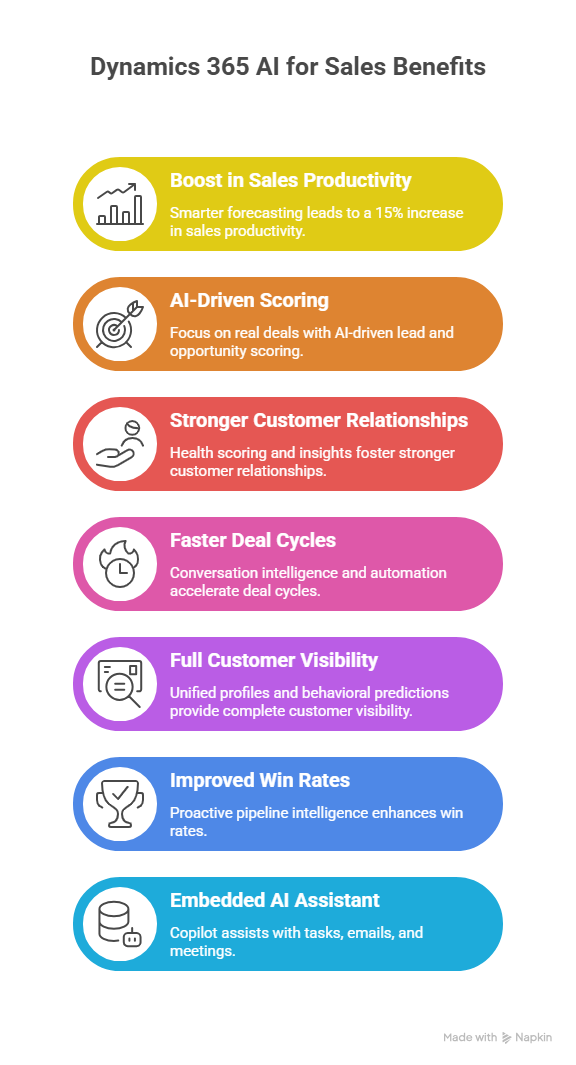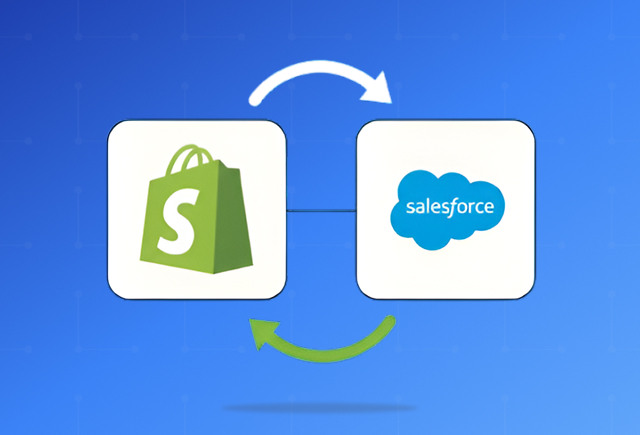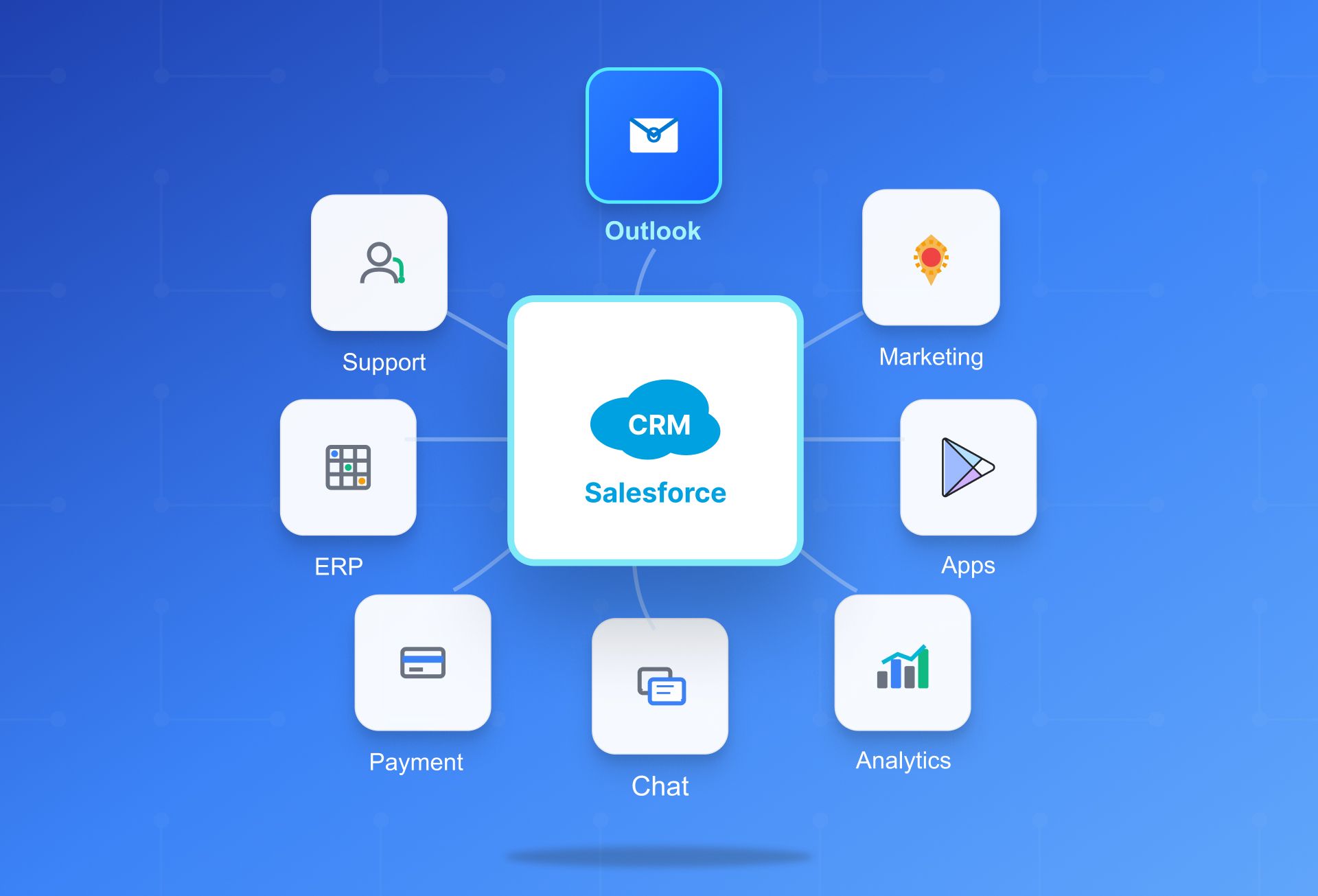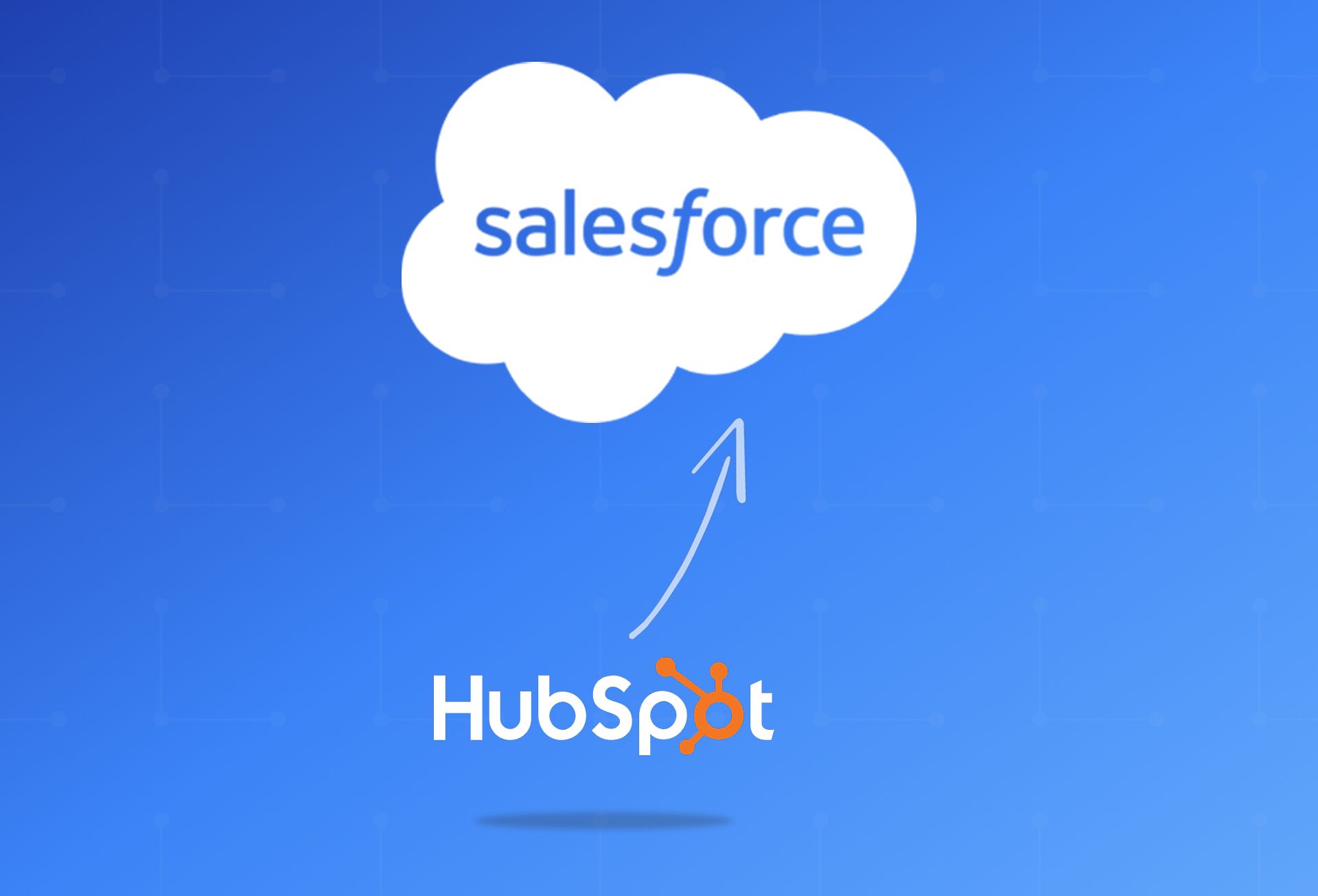When you’re in sales, every hour, every lead, every email matters. You don’t have time to waste guessing which deal is real and which one’s just noise.
That’s where AI comes into the picture
Companies using Dynamics 365’s AI-powered analytics are seeing up to 15% more sales productivity and a 20% jump in customer satisfaction. And it’s not just Microsoft saying this, Salesforce found that teams using AI analytics are 1.6x more likely to beat their sales targets.
Moreover, MarketingProfs reports a 77% increase in lead generation and 79% better conversion rates when AI handles lead scoring.
Bottom line?
When AI’s working behind the scenes, it gets smarter, faster, and way more focused. If you’re using Dynamics 365 and still not tapping into its AI features, you’re basically leaving deals on the table.
Here are 13 ways you can use Dynamics 365 AI for Sales efficiency
1. Predictive AI Capabilities
In sales, guessing is expensive. Predictive AI in Dynamics 365 Sales gives teams the data-backed insights they need to prioritize better, act faster, and drive results with less waste. Whether you're trying to tighten your forecast accuracy or stop chasing cold leads, these features are designed to solve the day-to-day challenges sellers face.
Sales Forecasting
Sales forecasting in Dynamics 365 uses historical sales data, CRM updates, and pipeline trends to predict future revenue and quota attainment.
Teams use this to get a clear view of how they’re tracking toward targets, week by week and deal by deal. It’s not just about reporting what happened; it’s about understanding what’s likely to happen next.
Sales leaders can explore different scenarios across product lines or territories, helping them make real adjustments when needed. Whether it’s reallocating resources or identifying a gap in the pipeline, forecasting becomes something the team can act on, not just look at in hindsight.
AI-Powered Lead Scoring
Lead scoring uses AI to automatically rank leads based on how likely they are to convert. It looks at past behaviors, demographic data, and engagement patterns, then assigns a score.
Sales reps rely on this to cut through the noise. Instead of working through every new lead manually, they get a clear view of which contacts are most worth their time.
This means less time wasted chasing cold leads and more time building relationships with people who are actually ready to buy.
Opportunity Scoring
Opportunity scoring works like lead scoring, but it focuses on deals already in the pipeline. It evaluates things like engagement history, email interactions, product interest, and meeting notes, then ranks each opportunity based on its likelihood to close.
Sales managers and reps use these scores to focus on deals that matter most. If a high-value deal is starting to stall, they’ll know. If an at-risk opportunity needs attention, they’ll get alerted.
It helps the team stay proactive and reduces the chances of valuable deals slipping through the cracks.
2. Conversation Intelligence
Imagine a rep on a discovery call with a high-value prospect. Instead of scrambling to take notes or trying to remember what was promised, the system transcribes the entire call, flags the competitor mentioned, detects that the customer was hesitant during pricing discussions, and highlights “Send proposal by Friday” as an action item. This is exactly what Conversation Intelligence in Dynamics 365 Sales is designed to do.
It uses AI and natural language processing to capture and analyze customer conversations in real time. let's see in detail what it can do for you
Call Transcription and Sentiment Analysis
Every customer call is automatically recorded and transcribed, removing the need for manual note-taking. AI analyzes the conversation to detect sentiment shifts, highlight key topics, and tag mentions of competitors or common objections.
This allows reps to refine their tone and messaging in future interactions and gives managers a clear view of how the customer feels throughout the sales cycle, which is often missed in standard call notes.
Action Item Detection from Calls
Conversation Intelligence doesn’t just record what was said. It understands it. Follow-up tasks like “I’ll send you the proposal tomorrow” or “Let’s reconnect next week” are automatically identified and extracted.
These items can be converted directly into CRM tasks so nothing is forgotten and reps can focus on execution instead of reviewing transcripts or scribbled notes.
Real-Time Transcript and Sentiment Dashboards
Reps and sales managers can review conversations through interactive dashboards. These tools provide visibility into sentiment trends, risky deal moments, and coaching opportunities based on real call data.
Instead of relying on vague summaries or memory, teams can clearly identify what needs improvement and where a deal might be at risk.
3. Relationship Intelligence
Imagine a sales rep who has been working a key account for months. Emails were frequent at the beginning, meetings happened regularly, and the relationship seemed solid. Then, slowly, the customer stopped responding as quickly, and meetings were pushed out. The rep didn’t realize the engagement had dropped until the deal slipped away.
This is exactly the type of situation that Relationship Intelligence in Dynamics 365 Sales is designed to prevent. Here’s a closer look at the key features of Relationship Intelligence and how sales teams use them to stay ahead.
Relationship Health Scoring
Sales teams use Relationship Health Scoring to evaluate how strong or weak each customer relationship is based on actual interaction data. The system calculates scores using email response times, meeting frequency, and engagement trends. It surfaces accounts that need attention and highlights those with strong momentum. This helps reps prioritize where to spend their time and effort more strategically.
Activity Trends Monitoring
By analyzing historical engagement patterns, Relationship Intelligence detects when communication starts to drop off. Reps are automatically alerted if a once-active prospect goes quiet, giving them a chance to re-engage before deals go cold. This early warning system is key to avoiding missed opportunities due to inactivity.
Communication Quality Analysis
Sales managers can review how consistently their teams are engaging with customers across email and meetings. The system benchmarks communication habits and highlights where engagement is strong or where it is lacking. This enables managers to coach reps on improving cadence and following best practices to ensure every relationship is nurtured effectively.
Ready to deploy Dynamics 365 AI for Sales in your organization?
4. Unified Customer Insights
Imagine a sales rep getting ready for a customer call. Instead of searching through old emails and different systems, they open Dynamics 365 and see everything about the customer in one place. The system shows past purchases, recent website visits, and even predicts what the customer might need next. When the customer checks that product online later, a personalized email is sent automatically.
That is what Unified Customer Insights in Dynamics 365 Sales is designed to do. Now let’s take a closer look at the key features that make this possible
Comprehensive Customer Profiles
Sales teams can gain a 360-degree view of each customer by consolidating data from CRM, email, social media, website activity, and purchase history. With this unified profile, every interaction is informed by customer preferences and past behavior, making outreach more relevant and personalized.
Behavioral Predictions
Sales teams can gain predictive insights into buying intent, churn risk, and product interests. By understanding what customers are likely to do next, they can act early to retain accounts, improve upselling opportunities, and strengthen long-term relationships.
Trigger-Based Campaigns
Sales teams can gain efficiency and timeliness by launching personalized communications automatically based on customer actions. For example, an email or offer can be sent when a customer views a product page, completes a purchase, or shows signs of disengagement. This ensures outreach happens at the right moment without manual intervention.







